Wetland Restoration on Private Land Case Study 5: Gorae District
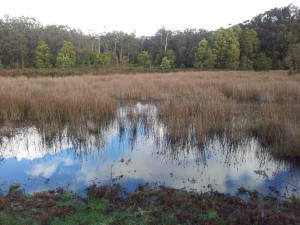
The small, picturesque wetland on private land at Gorae
This small wetland restoration project involved the installation of a temporary sandbag weir in a very old artificial drainage channel on a property at Gorae near Portland in South Western Victoria. The landholder was interested in restoring the natural wetland area of approximately 2 hectares, which forms the main natural feature of the small acreage allotment. The trial weir was constructed using sandbags made from geo-textile material, and placed to form a check dam wall and over-flow sill within the drain cutting.
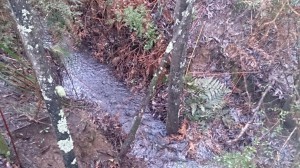
A freely flowing drain prior to the works
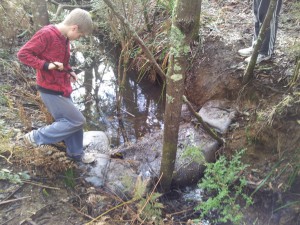
The new trial sill/weir height for the wetland is now in place – note the backwater inundation effect in the drain upstream, and the depth of the artificial cutting (reverse angle to previous image)
The sandbag structure is designed to function as a drainage regulation weir, to increase the depth and duration within the upstream wetland. During previous summers, the drain was removing a sufficient volume of water through the winter and spring to cause the remaining (reduced) wetland area to completely evaporate before the end of December.
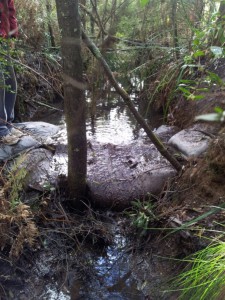
The small trial sand-bag weir holding back water (looking upstream)
The temporary sandbag weir was installed during the 2013 winter, during a high rainfall period, and an additional volume of water has now been successfully retained, providing a great opportunity to evaluate and measure natural seepage and evaporation rates over the coming summer – in the absence of drainage. To undertake this task, the landholder has installed a flood gauge to monitor inundation levels as they recede throughout the dry season. Monitoring of the water levels will help with assessing and determining the long term optimal height of the weir.
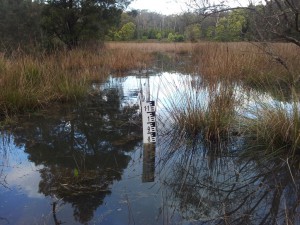
The gauge board for monitoring wetland levels – situated in the drain as it exits the wetland
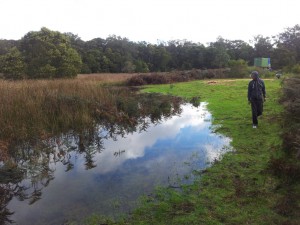
An observed increase in wetland extent (extra inundated perimeter) caused by the restoration trial – 30th August 2013
Temporary weir structures provide both designers and landholders with a low risk trial approach to wetland restoration. This project will provide a valuable shared understanding of local hydrology, allowing the landholder time to assess wetland conditions and characteristics, before making an informed decision about the installation of a more permanent structure in the future.
If you are interested in having a wetland restoration trial undertaken on your property, please contact us here.
This Case Study is the fifth in a series to illustrate wetland restoration in practice, delivered through Nature Glenelg Trust’s Wetland Restoration Program on Private Land and funded by the Australian Government’s Clean Energy Future Biodiversity Fund.
Note that this Blog will be also be retained for future reference under the wetland restoration project menu at this address.

